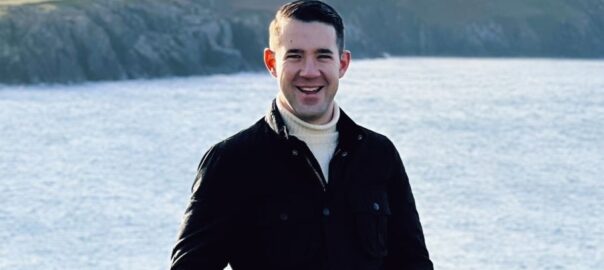If you’ve been diagnosed with testicular cancer, the likelihood is by this point you’ve had various different scans and tests, and you’ve been seen by multiple medical departments. After you’ve been given the news (usually by a urologist) and all of the scans are over, the hospital automatic doors open and you walk back outside to your life. Only this time, with cancer.
Telling the people you know and love is one of the next challenges you’ll face in your journey to recovery. How do you tell them? What do you tell them? At this point, your head may be swimming and you feel as though you don’t know enough yourself to relay to anybody else coherently.
This is normal. No one expects to ever say the words, “I have cancer.” Testicular cancer is most common in men in their late 20s and early 30s. You especially don’t expect to be saying those words at such a young age.
You may feel overwhelmed, shocked and scared. This is all normal too. But it is extremely important and helpful that you tell your friends and family as soon as you are able to.
Reasons to tell your friends and family
- Your loved ones and family members care about you.
- They just want to know that you will be okay.
- It is cathartic to talk about it and will help you maintain a positive outlook.
- Making others feel comfortable and optimistic about your recovery will rub off on you.
- Talking to others normalises the subject and relieves any stigmas around it.
- Even if you break down in tears, do it, you may need it!
- It becomes easier to talk about it the more you talk about it.
The hard part about telling the people you love
One of the most difficult parts about telling people is that you find yourself repeating yourself quite a lot. People want to know the finer details so you end up repeating the words ‘I have cancer’ a lot – as well as the details of the tumour, your diagnosis, and your operation.
Hearing yourself say it over and over can be strange and often upsetting, but it gets easier and easier as a result. Telling yourself is as important as telling other people. Bottling it all up can otherwise affect your mental health further down the line. Being comfortable saying it will make it a lot easier to talk about with other people, and vice versa.
Choosing which method to tell people can often be difficult too. Do you call them? Visit them? Message them? This will ultimately depend on your personal preference and how you usually interact with your friends and family. There is no ‘right way’ to do this. Whichever way you choose, once you tell a few people, they will inform others and people may then start to contact you instead.
Share whatever you are comfortable with
Despite the advice so far, remember that first and foremost you do not have to tell anyone if you do not want to. This blog recommends that you do with reasons why, but it is always up to you. You decide who to share with and how much you share.
However, it is important that you do tell your employer if you are working or teachers if you are in education. They should be able to grant medical leave or anything else you may need to assist your employment or course during your treatment and recovery. They are also obliged to keep the information you share confidential.
If someone talks or wants to know about something that’s off limit for you, you can politely decline to talk or simply redirect the conversation. This is your journey so it’s up to you how you wish to talk about it and deal with it.
Don’t hide or be embarrassed about how you feel
No one is expecting you to put a brave face on and it is totally fine and normal to be scared – or even angry! Whilst it’s important to not let these emotions take over you to an extent that you affect others, it is vital that you are able to express them. There isn’t a ‘right’ way to feel when you’ve been diagnosed with testicular cancer. Don’t shut people out but set boundaries that are right for you.
Get support from others who’ve had testicular cancer
Don’t let your mental health or your emotional wellbeing take a backseat when going through testicular cancer treatment. Take advantage of the support around you, whether this is your friends and family, or seeking professional help.
A lot of men find it helpful to talk with a therapist while going through or recovering from testicular cancer. Here at Baggy Trousers UK we have a number of members that have experienced testicular cancer, and they will be more than happy to talk to you.
For more information contact us using our contact form, or get hold of us on Facebook, Instagram, or X (Twitter).











